Although summer is coming to a close, it does not mean your gardening work is done! August is one of the busiest months for gardeners, whether they have a perennial space, annual garden, or both. We understand if you are unsure about what tasks to tackle this time of the year. There are enough things to address that it may start to feel overwhelming. But don’t worry. We have collected twelve gardening tips for you to follow every August to help you out.
Let’s dive in!
1. Plant Cold-Hardy Plants
Many summer vegetable gardeners stop planting crops later in the summer. However, when they do so, they miss out on a fantastic fall (and maybe winter) harvest. Cold-tolerant and cold-hardy vegetables, like brassicas, can handle a light to moderate freeze. And some veggies (like carrots) taste even better as the ground cools. Check your frost dates and the tolerance of the veggies you are interested in before planting. Items like kale can handle harder frosts or freezes but will need some protection.
This tip also applies to perennials. Several perennial plants do best when planted in late summer or early fall. Some of these are flowers that bloom later in the year, providing lovely fall colors to your space.
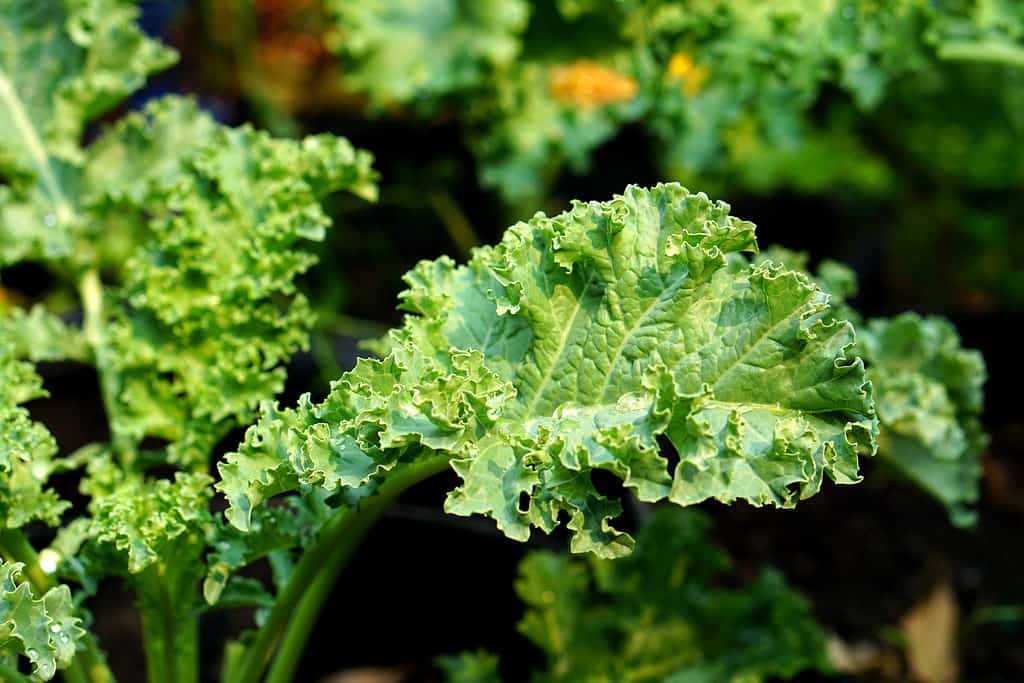
Kale is cold-hardy and is an excellent option for planting in your August garden.
©BlueSky_31/Shutterstock.com
2. Repot Plants
Annuals and perennials love the warmth and extra daylight hours of summer, just like us! That means many (or most) of your potted plants may have gone through significant growth. Consider repotting them in larger containers in August. Doing so will ensure they are ready for next year and save you a step in the spring while you are busy trying to get the rest of your plants in the ground.
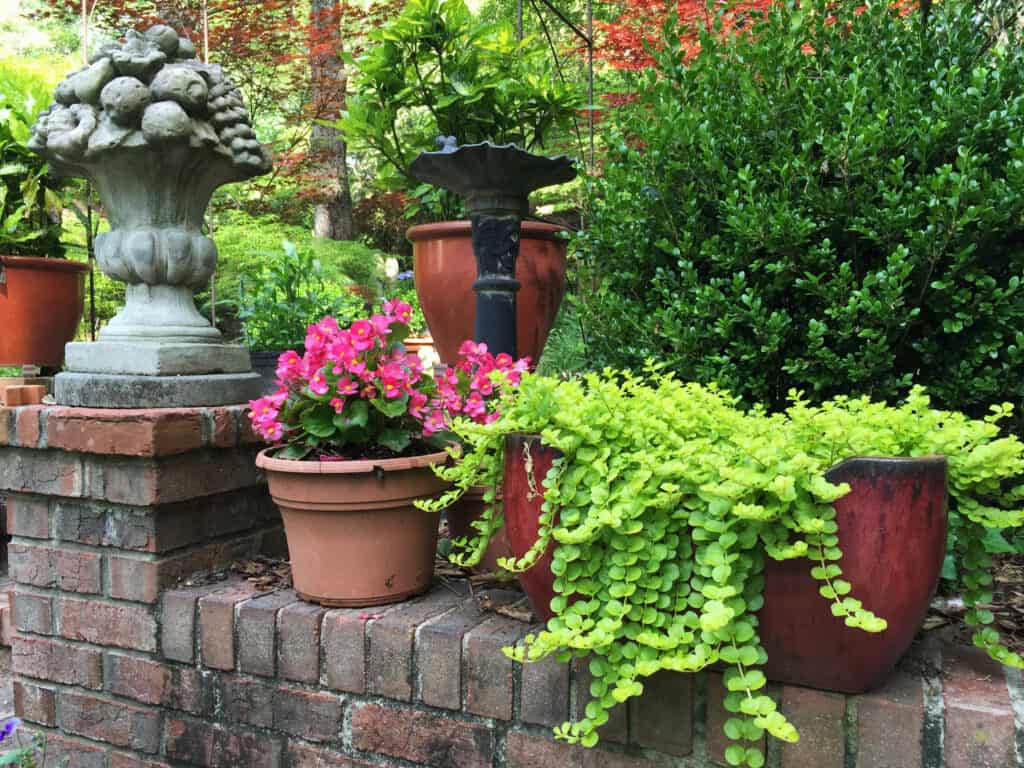
Container plants often outgrow their homes over the summer. Repot them in August to give their roots a chance to stretch.
©iStock.com/LCBallard
3. Evergreen Maintenance
August is typically the hotter, drier time of the year. And that means any evergreens you have may be in dire need of watering and pruning. Take August to provide deep sessions of watering to help your evergreens thrive. It is also the time to prune away dead or diseased parts of the plants.
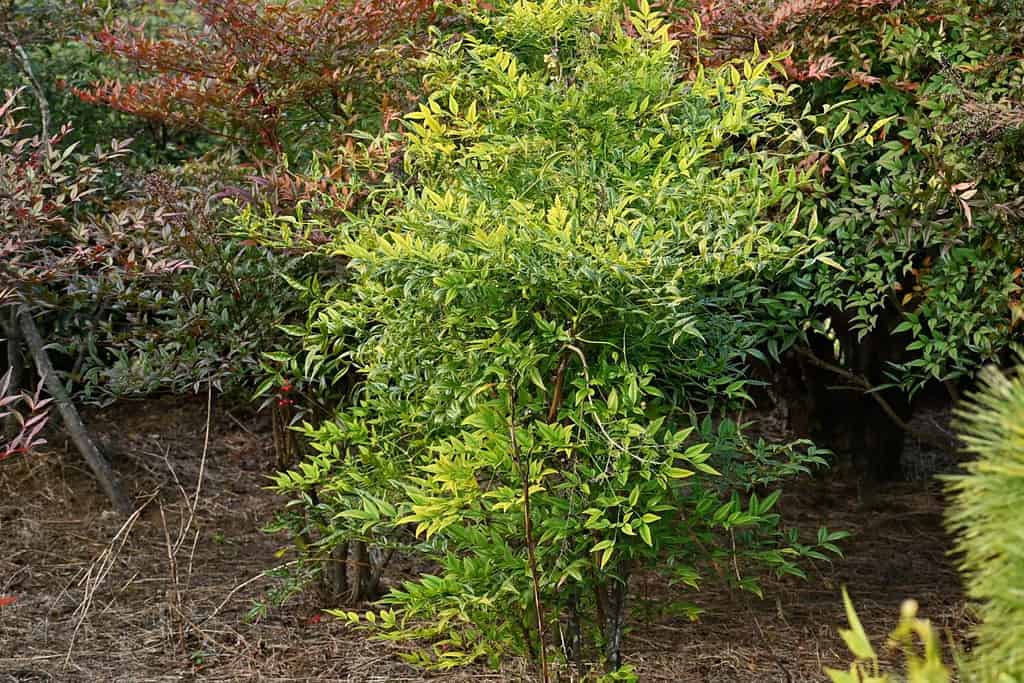
Take August to provide deep sessions of watering and pruning to help your evergreens thrive.
©tamu1500/Shutterstock.com
4. Harvest
August is the peak harvesting season for many herbs and vegetables. Carve out time in your schedule to bring in your bountiful supply. Some items to watch out for include summer squash, herbs, cucumbers, potatoes, and onions. Depending on your growing zone, you may also start pulling in abundant peppers and tomatoes. Those in warmer growing zones are likely past that point and may need to start watching for their winter squash.
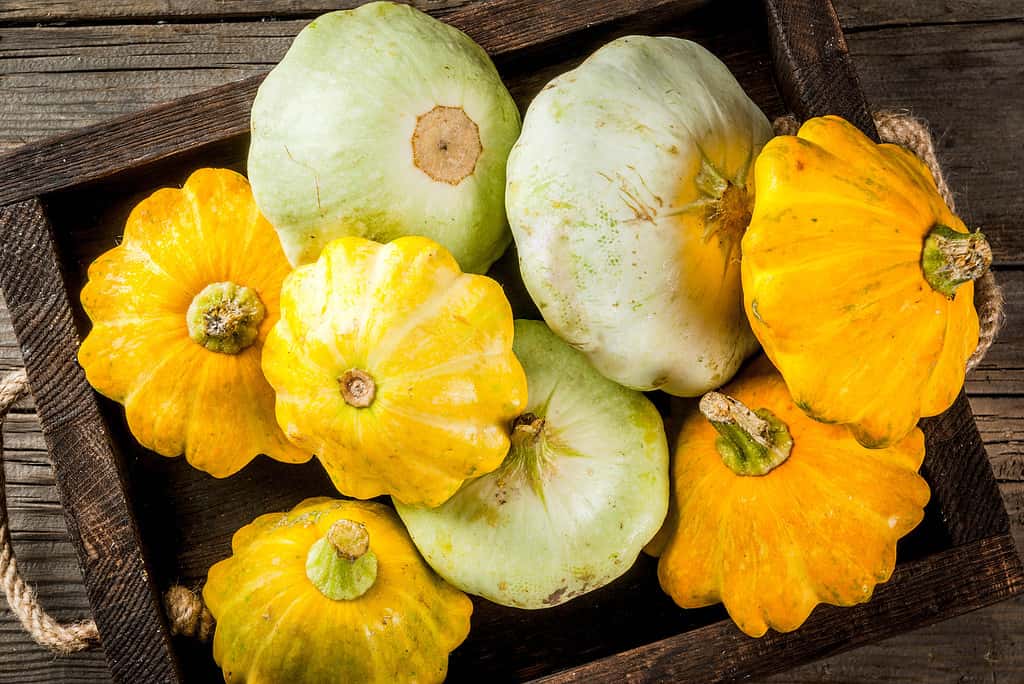
Spend plenty of time in your August garden to harvest any ready fruits or vegetables.
©Rimma_Bondarenko/iStock via Getty Images
5. Stop Fertilizing
This tip is primarily dependent on your growing zone. We typically want to fertilize plants during the height of the growing season. Doing so ensures lush foliage and gorgeous flowers. If you live in a warmer growing zone, you can likely skip this step until September since you have a longer season. But if you live in a colder environment, August is the latest you want to fertilize since most of your perennials will start entering dormancy.
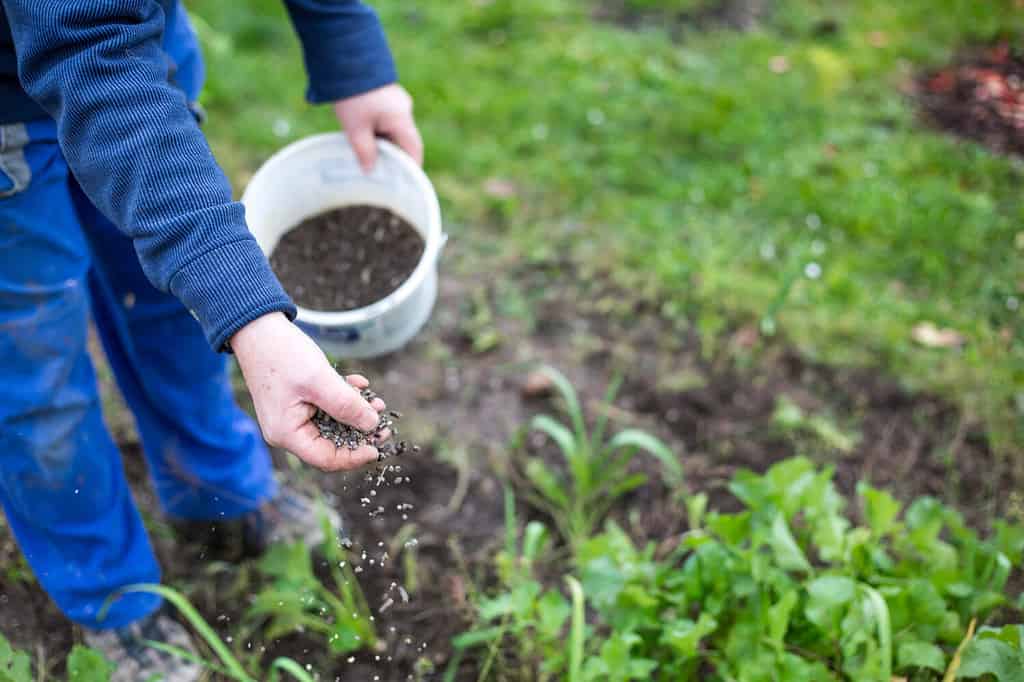
If you live in a colder environment, August is the latest you want to fertilize.
©Simon Kadula/Shutterstock.com
6. Divide Perennials
Spend August getting your perennial garden ready for next year. It is an important time for perennial flowers since many have stopped their active flowering period. Dividing your existing perennials will save you time and money next year. Plus, it is incredibly easy. Using a spade, gently lift your perennial flower out of the soil. Use a garden knife to divide the root ball into additional plants carefully. Root those cuttings in fresh potting soil as soon as you’re able to.
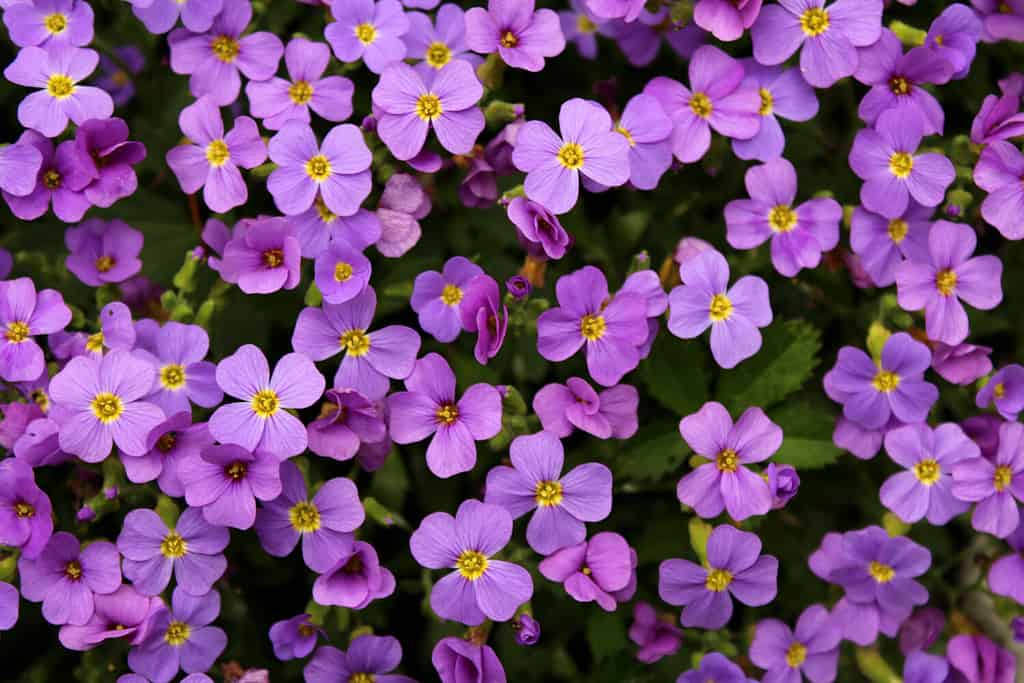
Divide your perennials so you have extras to plant elsewhere or give away.
©Hecos/Shutterstock.com
7. Weed
We know nobody likes that word or task. Unfortunately, maintaining a beautiful and thriving garden is an important part. But the problem is, we all get busy during the summer, and weeding often takes a backseat. That’s okay. Now is the time to tackle this dreaded task. We strongly recommend taking care of any overgrown, weedy areas in August because, in a few short weeks, weeds will start to go to seed. Then, you’ll have an even bigger problem to tackle, and setting yourself up for success in the spring will take more effort.

We strongly recommend taking care of any overgrown, weedy areas in August because, in a few short weeks, weeds will start to go to seed.
©iStock.com/Yesim Sahin
8. Plant Flowers and Shrubs
It seems counterintuitive to plant flowers and shrubs right before fall and winter roll around. However, many varieties need a period of dormancy in the cold soil before they can take off. So, if you have your eye on plants like daylilies or hydrangeas, now is the time to get them in the ground. Don’t forget to water them thoroughly in August and add some thick mulch as the temperatures start to drop.
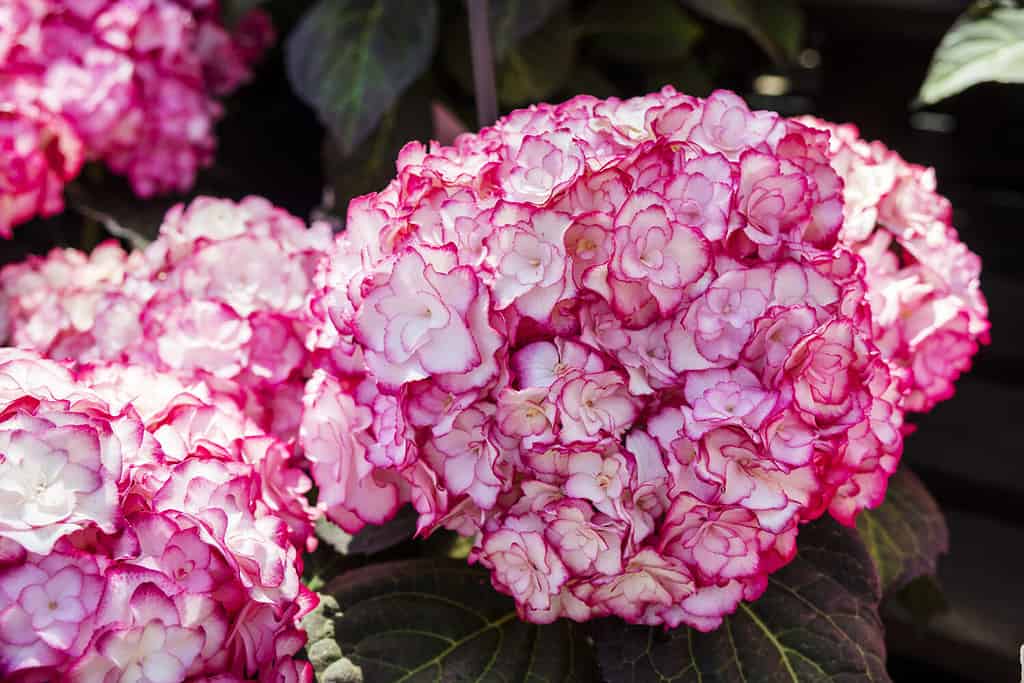
It seems counterintuitive to plant right before fall and winter. However, many varieties need a period of dormancy in the cold soil.
©Debu55y/Shutterstock.com
9. Inspect Your Plants for Diseases
No matter where you live, August brings plenty of heat. And some areas also experience periods of intense humidity coupled with that heat. Unfortunately, this opens the door for many diseases to strike your garden. So don’t get complacent with garden care just because the summer is winding down. Take the time to inspect your plants regularly. And address diseased areas promptly. This step will help prevent the spread of disease and may extend your growing season.

Remove diseased sections to try and stop the spread.
©Shadow Inspiration/Shutterstock.com
10. Add Shade Cloth Over Delicate Plants
The intense sun and heat in August can damage many of your delicate plants. This time of year is a good time to do another round of planting. However, things like lettuces and herbs are also susceptible to sunburn. Take the preventative step of adding shade cloth to your beds to save your new seedlings and bring in an abundant fall harvest!

Add a shade cloth over the more delicate plants in your August garden.
©VPales/Shutterstock.com
11. Prune Flowering Shrubs
Many flowering shrubs start to taper off at the end of July and into August. Once the flowers die back on your shrubs, take the time to prune off old growth. Doing so will help contain the spread of your plants and give you a head start in the spring. Additionally, taking this step in August will allow plenty of time for the pruned branches to heal before the cold sets in.
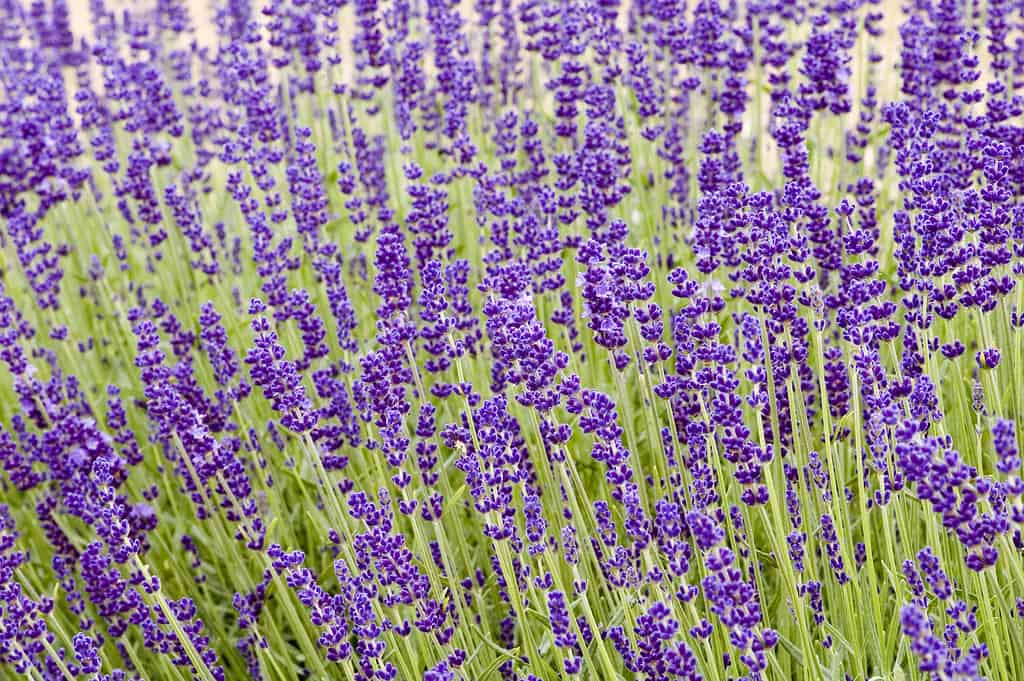
Prune the flowering shrubs in your garden before the cold sets in, and save a step in the fall!
©gardendata/ via Getty Images
12. Collect Seeds
How would you like to save some money on seeds every year? It is easier than you may think. Annual flowers and vegetables all eventually end up going to seed. So, if you have a plant (or multiple plants) that did exceptionally well over the summer, consider saving the seeds for future use. It doesn’t take much time and is fairly easy. The only catch is that you need to be okay with a few unsightly plants in your garden for several weeks.
Once your plants go to seed, collect them and thoroughly dry them. Then, store them in a cool and dry environment until next year. Some plants are easier to save seeds from than others. And a handful are open pollinators, so you may not get true seed from them. So, research the plant you want to save seeds from for more detailed information.
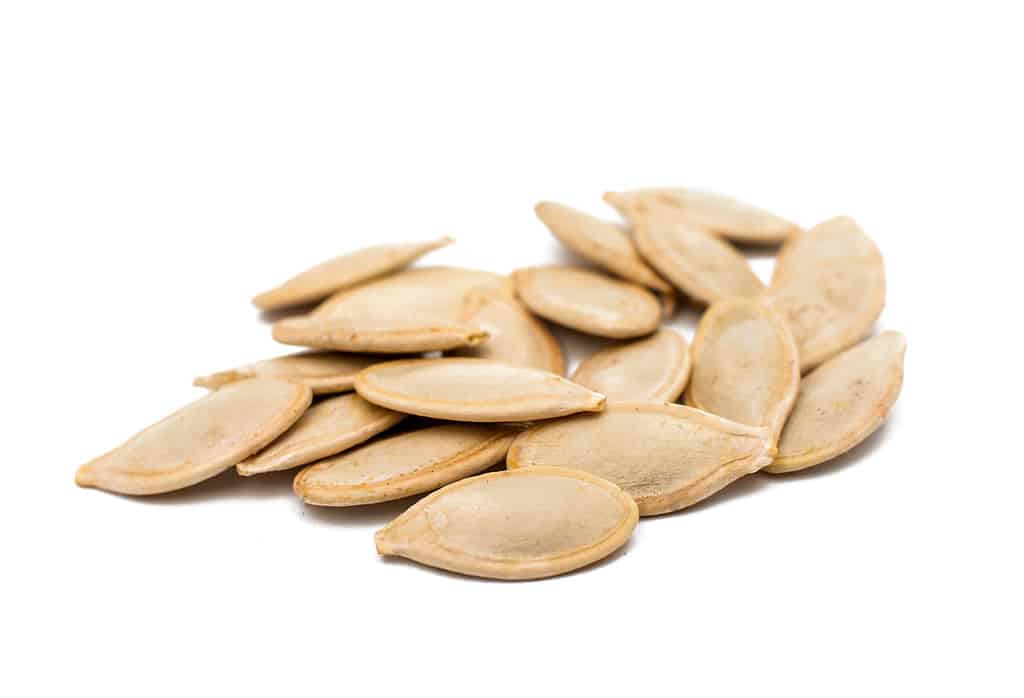
If you have a plant (or multiple plants) that did exceptionally well over the summer, consider saving the seeds for future use.
©oksana2010/Shutterstock.com
Summary of 12 Must-Follow Gardening Tips
| Number | Tip |
|---|---|
| 1 | Plant Cold-Hardy Plants |
| 2 | Repot Plants |
| 3 | Evergreen Maintenance |
| 4 | Harvest |
| 5 | Stop Fertilizing |
| 6 | Divide Perennials |
| 7 | Weed |
| 8 | Plant Flowers and Shrubs |
| 9 | Inspect Your Plants for Diseases |
| 10 | Add Shade Cloth Over Delicate Plants |
| 11 | Prune Flowering Shrubs |
| 12 | Collect Seeds |
The photo featured at the top of this post is © tab1962/ via Getty Images
Thank you for reading! Have some feedback for us? Contact the AZ Animals editorial team.







